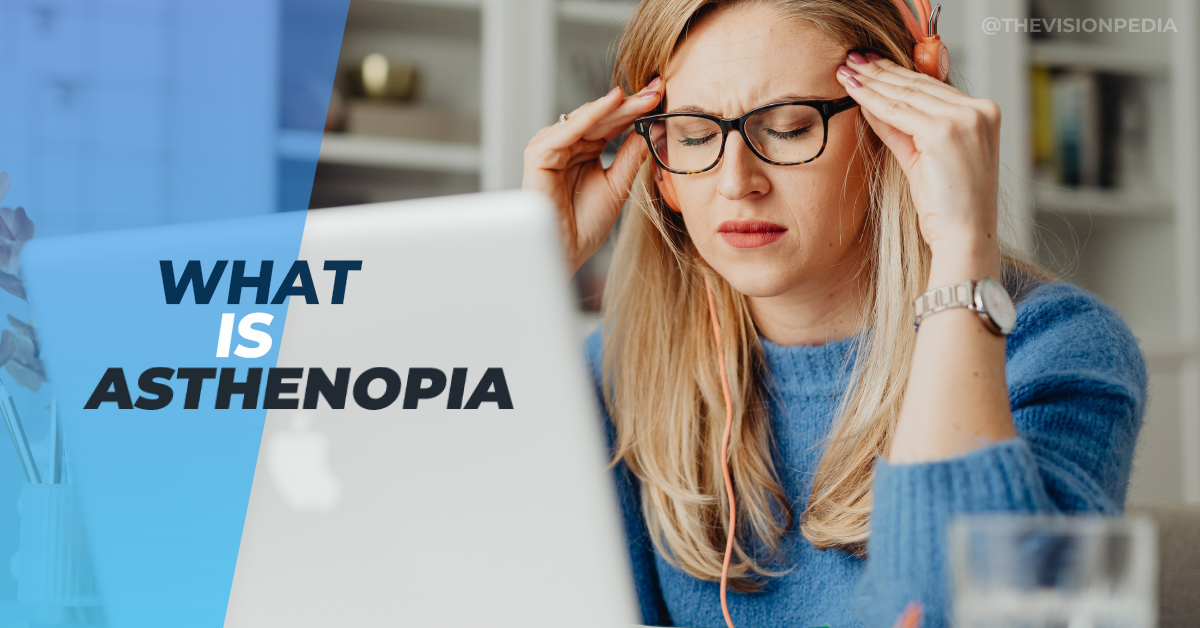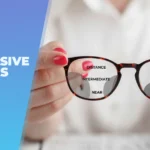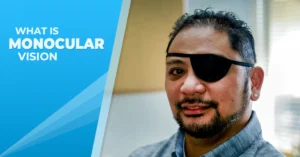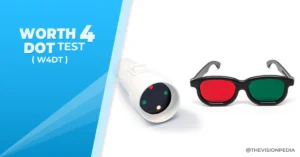|
Getting your Trinity Audio player ready...
|
Definition
Asthenopia, a common condition, presents subjective symptoms like ocular fatigue, discomfort, lacrimation, and headaches, stemming from intense eye use, often due to digital devices.
Also known as eyestrain and eye fatigue, synonyms for asthenopia highlight its prevalent nature.
Transitioning further, it’s important to note that eye strain isn’t usually a serious condition.
However, it can cause discomfort, necessitating lifestyle changes or treatment.
In this context, recognizing the significance of these symptoms becomes crucial.
Symptoms Of Asthenopia
Describing asthenopia symptoms reveals a range of discomforts.
These symptoms can vary among individuals due to causes and underlying eye issues.
Common symptoms encompass eye pain, headaches, dry or watery eyes, blurred vision, and sensitivity to light.
The individual experience of these symptoms depends on factors such as causative elements and existing eye conditions.
Causes of Asthenopia
Exploring the origins of asthenopia unveils various triggers for this condition.
These causes encompass factors like uncorrected refractive errors, extended digital device use, vision syndrome, unaddressed vision issues, dim or Bright Light, and imbalances in eye muscles.
Understanding these causes helps identify effective strategies for prevention and management.
Refractive Error
Introducing the concept of refractive error clarifies its link to asthenopia, highlighting how uncorrected refractive errors contribute to eye strain and fatigue.
Three specific types of refractive errors, namely astigmatism, myopia, and hypermetropia (farsightedness), play significant roles.
It’s crucial to stress the importance of addressing these errors through prescription glasses provided by a qualified eye care professional.
Rectifying these errors not only improves vision but also mitigates the risk of eye strain.
Digital Device Use
Digital device use significantly impacts asthenopia development, with prolonged screen time, poor posture, and screen glare contributing to Digital eye strain.
Elaborating, extended periods of screen engagement strain the eyes, compounded by improper posture and reflective glare.
To alleviate these effects, recommended adjustments are vital.
Implementing smarter screen practices, such as adhering to the 20-20-20 rule (taking a 20-second break every 20 minutes to focus on something 20 feet away), maintaining an appropriate screen distance, ensuring correct screen positioning, and adjusting screen settings for optimal visibility, prove effective.
By incorporating these measures, the risk of asthenopia can be minimized, promoting healthier digital device use habits.
Vision Syndrome
Detailing vision syndrome, an increasingly prevalent eye condition linked to prolonged digital device use, is essential.
This syndrome presents noticeable symptoms, such as eye fatigue, blurred vision, headaches, and light sensitivity, all stemming from extensive screen exposure.
Understanding the risk factors and causes of vision syndrome is paramount.
Uncorrected vision, excessive digital device use, and suboptimal lighting conditions contribute significantly.
These elements converge to create an environment conducive to vision syndrome development, reinforcing the importance of maintaining eye health and employing preventive strategies.
Uncorrected Vision
Uncorrected vision significantly influences asthenopia symptoms, underscoring the need for routine comprehensive eye examinations to detect subtle changes.
Stressing this, such regular checks aid in identifying any shifts in visual acuity and refractive errors, allowing for timely intervention.
Additionally, children are particularly susceptible to asthenopia due to their limited ability to discern shifts in vision clarity.
Because of this, their vulnerability highlights the necessity of consistent eye assessments, enabling the identification and correction of potential issues before they escalate.
Dim or Bright Light
Lighting conditions, whether dim or bright, significantly impact asthenopia.
Excessive glare from bright lights contributes to eye fatigue, creating discomfort.
Conversely, insufficiently dim lighting strains the eyes, leading to discomfort and potentially exacerbating asthenopia symptoms.
To alleviate these effects, adjusting lighting is crucial.
For close tasks, placing light sources behind you can reduce glare, aiding in preventing eye strain.
Employing lampshades also diffuses and softens the light, minimizing discomfort.
Recognizing the importance of gentle lighting, particularly for activities like watching TV, further promotes eye comfort and overall well-being.
Eye Muscle Imbalance
The concept of eye muscle imbalance is integral to understanding asthenopia.
It pertains to an uneven distribution of strength in the muscles of both eyes, a factor closely linked to the development of this condition.
When such an imbalance occurs, it results in eye strain, blurriness, and even double vision.
Binocular vision disorders, like convergence insufficiency, esophoria, and exophoria, can exacerbate this muscle imbalance.
These conditions affect the coordination between the eyes, contributing to eye strain and discomfort.
Symptoms of eye strain due to this muscle imbalance manifest as persistent discomfort, headaches, blurred vision, and difficulties focusing on near objects.
To counter these effects, vision therapy emerges as a recommended treatment.
This therapy focuses on strengthening the eye muscles responsible for accurate focus, effectively addressing the underlying causes of asthenopia.
Risk Factors for Asthenopia
Understanding the risk factors for asthenopia is paramount in addressing and preventing this condition.
By recognizing the various elements that contribute to its development, individuals can adopt proactive measures to mitigate its impact.
From prolonged screen time to poor lighting conditions and even contact lens wear, these risk factors shed light on the multifaceted nature of asthenopia.
Delving deeper into each factor unravels the steps needed to create a healthier and more comfortable visual experience.
Prolonged Screen Time
The impact of prolonged screen time on asthenopia symptoms cannot be underestimated.
Extended use of computers and digital devices places a considerable strain on the eyes, often resulting in eyestrain and various discomforts.
This strain is exacerbated by a combination of common factors, including decreased blinking frequency, improper viewing distances or angles, glare or reflections from screens, and poor contrast levels.
Recognizing these factors becomes crucial in addressing the effects of prolonged screen exposure and working towards alleviating asthenopia symptoms.
Contact Lens Wear
Introducing the concept of contact lens wear and its connection to asthenopia unveils an important consideration.
Prolonged use of contact lenses can indeed contribute to eye strain, impacting visual comfort.
For individuals who wear contact lenses, symptoms like dry eyes, discomfort, and blurry vision may arise.
Recognizing these symptoms is pivotal in managing the potential effects of asthenopia.
Emphasizing proper contact lens hygiene and adhering to recommended wear times is paramount.
Maintaining hygiene minimizes the risk of discomfort and complications while adhering to wear schedules helps prevent strain on the eyes.
By maintaining a proactive approach to contact lens wear, individuals can effectively manage asthenopia symptoms and ensure optimal eye health.
Diagnosis of Asthenopia
Diagnosis of asthenopia, commonly known as eye strain, involves a comprehensive assessment by an eye care professional.
This typically includes a detailed patient history to understand symptoms and potential contributing factors such as prolonged digital device use, improper lighting, or uncorrected vision problems.
A thorough eye examination is conducted to evaluate visual acuity, eye muscle coordination, focusing abilities, and overall eye health.
Specialized tests might be employed to measure the efficiency of eye movements and the ability of the eyes to work together harmoniously.
Once the diagnosis is established, personalized recommendations for corrective lenses, lifestyle adjustments, and ergonomic practices are provided to alleviate discomfort and enhance visual comfort.
Tests to Diagnose Asthenopia
Diagnosing asthenopia involves a battery of tests aimed at uncovering potential underlying eye conditions or refractive errors that could be contributing to the symptoms.
Visual acuity assessment gauges the clarity of vision and helps identify any significant impairments.
Refraction testing determines the precise prescription needed for corrective lenses, addressing any focusing problems that could lead to eye strain.
The examination of ocular muscle balance investigates how well the eye muscles coordinate and work together, revealing issues like strabismus or vergence insufficiency that may cause discomfort during prolonged visual tasks.
These tests collectively aid in pinpointing the root causes of asthenopia, facilitating tailored interventions for improved visual comfort and alleviation of symptoms.
Management and Treatment
The management and treatment of asthenopia involve a multifaceted approach aimed at addressing its underlying causes and providing symptomatic relief.
First and foremost, optimizing Ergonomics and lighting during tasks like computer work helps alleviate strain.
Vision therapy, encompassing eye exercises and training, enhances ocular muscle coordination and focusing abilities.
For those with refractive errors, accurate prescription lenses are essential. Implementing the 20-20-20 rule, which suggests taking a 20-second break every 20 minutes to look at something 20 feet away, reduces eye strain.
Additionally, fostering healthy screen habits, maintaining a balanced visual diet, and regular eye check-ups contribute to long-term management and reduction of asthenopia symptoms.
Adjust your lighting
Adjusting lighting is paramount in mitigating eye strain and fatigue, as it significantly impacts visual comfort during various activities.
When engaged in close tasks like reading or sewing, having ample and appropriately positioned light sources is crucial.
Ample light ensures that the eyes don’t strain to focus, reducing the risk of discomfort.
The light source should be positioned over the shoulder or to the side, casting light evenly without creating harsh shadows or glare.
Conversely, when watching TV or engaging in activities where the ambient light is lower, opting for soft or dim lighting helps prevent excessive glare, which can cause eye strain over time.
By consciously managing lighting conditions, individuals can proactively safeguard their eyes from unnecessary strain and fatigue, promoting overall visual well-being.
Vision Therapy
Vision therapy offers an effective avenue for managing asthenopia by targeting the underlying visual issues contributing to eye strain and discomfort.
This non-invasive, personalized approach involves a series of eye exercises and activities designed to improve the coordination of eye muscles, enhance focusing abilities, and promote visual comfort during prolonged tasks.
Through guided sessions supervised by optometrists or vision therapists, patients engage in exercises that challenge their visual system, encouraging it to adapt and function more efficiently.
These exercises can include tasks that improve convergence, accommodation, and eye-tracking skills.
Vision therapy aims to alleviate the symptoms of asthenopia by training the eyes to work together harmoniously, enhancing visual stamina, and ultimately reducing strain and fatigue experienced during activities like reading, using digital devices, or engaging in close-up work.
Use artificial tears
Utilizing artificial tears provides significant advantages in alleviating and preempting asthenopia symptoms.
Over-the-counter (OTC) lubricating eye drops play a pivotal role in mitigating the dryness induced by eye strain.
These drops effectively moisten the eyes, enhancing comfort during prolonged visual tasks.
Notably, preservative-free lubricating eye drops, such as Refresh Optive, Systane Ultra, or TheraTears, stand out as optimal choices due to their gentle formulation.
Regular application of these drops, even if the eyes feel fine beforehand, is essential when engaging in digital device usage.
This proactive measure maintains consistent ocular lubrication, reducing the risk of discomfort and dryness associated with asthenopia, thus fostering improved visual well-being.
Take Breaks
Effectively managing screen time is crucial in addressing asthenopia symptoms.
Embrace the 20-20-20 rule: Take a 20-second break every 20 minutes to focus on something 20 feet away, alleviating eye strain.
Maintain an arm’s length distance from the screen to reduce strain on the eye’s focusing mechanism.
Position the screen slightly downward to minimize glare and optimize eye comfort.
Consider a matte screen filter to diminish glare and reflections.
Adjust screen settings for enhanced visibility, adjusting brightness, contrast, and font size to prevent squinting.
By implementing these recommendations, individuals can proactively mitigate the impact of prolonged screen exposure and foster a more comfortable and visually supportive environment.
Key Takeaway
The essential insight drawn from this information is that asthenopia, although common among individuals using digital devices extensively, is not a severe condition and can be effectively managed through straightforward lifestyle adjustments.
Notably prevalent among university students and those engaged in prolonged screen use, asthenopia is avoidable by implementing key measures.
Limiting screen time, incorporating regular breaks, and making essential changes to one’s environment play pivotal roles in preventing the reoccurrence of symptoms.
By heeding these recommendations, individuals can proactively curb the impact of asthenopia, fostering sustained visual well-being and comfort in their daily lives.
FAQ
When to see a doctor
Consulting a doctor is advisable if asthenopia symptoms persist or worsen despite implementing preventive measures.
If eye strain, discomfort, or dryness continues despite following ergonomic practices, adjusting screen
time, and using artificial tears, seeking professional evaluation is recommended.
Additionally, if symptoms interfere with daily activities, work, or academic performance, a visit to an eye care specialist is warranted.
Individuals experiencing other concerning issues like double vision, persistent headaches, or changes in vision should also seek medical attention promptly.
Overall, seeking a doctor’s guidance ensures a comprehensive assessment, proper diagnosis, and personalized recommendations to effectively address any underlying issues causing asthenopia.
Does blue light cause eyestrain?
Yes, exposure to blue light emitted by digital devices, such as computers, smartphones, and tablets, can contribute to eyestrain.
Blue light is a short wavelength, high-energy light that is emitted by various sources, including digital screens and energy-efficient lighting.
Prolonged and uninterrupted exposure to blue light, especially during evening hours, can disrupt the body’s natural circadian rhythm, leading to digital eye strain and potential sleep disturbances.
Blue light is also known to scatter more within the eye, which can cause visual discomfort and contribute to digital eye strain.
To mitigate the effects of blue light, individuals can consider using blue light-blocking screen filters or wearing blue light-blocking glasses, which can help reduce the intensity of blue light exposure and alleviate potential eyestrain.
Can eye strain last for weeks or months?
Yes, eye strain can indeed persist for weeks or even months, especially if the underlying causes are not addressed or if the contributing factors continue.
Prolonged engagement in activities that strain the eyes, such as excessive screen time, reading under poor lighting, or performing close-up work, can lead to persistent eye strain.
Additionally, individuals with uncorrected refractive errors, such as nearsightedness or astigmatism, might experience chronic eye strain if they do not wear the appropriate corrective lenses.
It’s important to recognize that eye strain is a symptom and not a specific condition.
It can be caused by a variety of factors, including dry eyes, uncorrected vision problems, improper lighting, or even underlying health conditions.
If eye strain persists for an extended period, it’s advisable to consult an eye care professional for a comprehensive eye examination.
Addressing the root causes and implementing appropriate measures can help alleviate prolonged eye strain and promote better visual comfort.
How long does it take for eye strain to disappear completely?
The duration for eye strain to completely disappear can vary widely based on individual factors and the severity of the strain.
For some individuals, mild cases of eye strain might resolve within a few hours to a couple of days after implementing proper rest, adjusting habits, and practicing eye exercises.
However, in more persistent cases, where factors like prolonged screen time, uncorrected vision problems, or inadequate ergonomic practices contribute, it might take several days to a few weeks for symptoms to fully alleviate.
It’s important to note that chronic or severe cases of eye strain might take longer to resolve, and in some instances, professional intervention could be necessary.
Regular eye check-ups, adherence to preventive measures, and seeking medical advice if symptoms persist can all contribute to a quicker recovery from eye strain and the restoration of optimal visual comfort.







